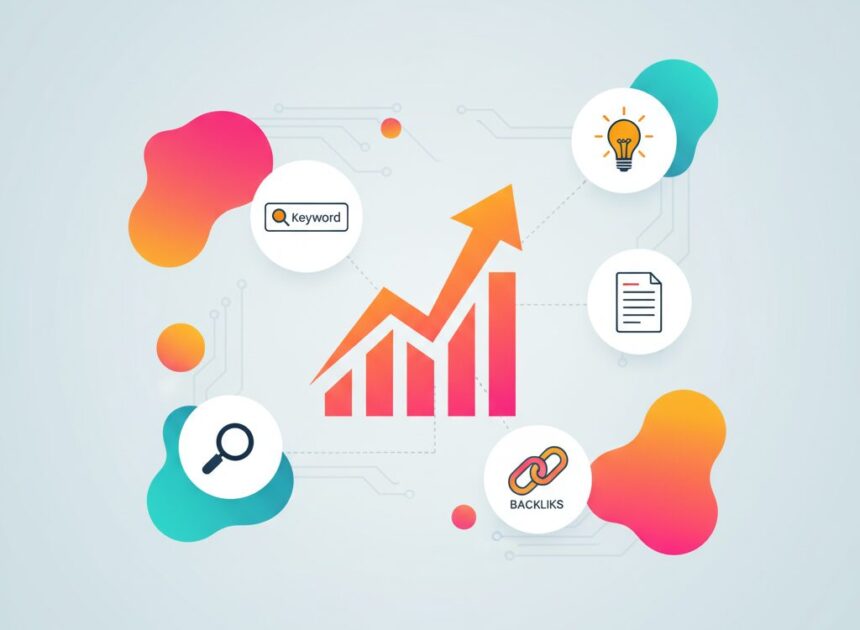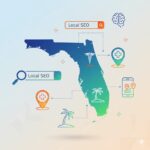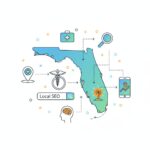Are you pouring money into paid ads, only to see your visitors vanish the moment you turn off the spending? It’s a common frustration. But what if there was a way to attract a steady stream of highly interested visitors to your website for free, day after day? This is the power of organic traffic.
Simply put, organic traffic consists of all the visitors who land on your website from unpaid search results. When someone types a query into Google, Bing, or any other search engine and clicks on one of the non-ad listings, that’s organic traffic. They found you naturally because the search engine determined your content was a relevant answer to their question.
This guide provides a complete framework to help you understand organic search traffic and show you how to increase organic traffic with proven, sustainable strategies. By the end, you’ll have a clear roadmap to improve website traffic for the long haul.
Understanding the Fundamentals of Organic Traffic
Organic vs. Other Traffic Channels
Your website analytics can feel like a sea of data, but understanding where your visitors come from is crucial. Traffic is typically broken down into a few main channels:
- Organic Traffic: Visitors from unpaid search engine results. Earned through high-quality content and effective SEO.
- Paid Traffic: Visitors who click on your ads from platforms like Google Ads or social media ads. You pay for every click or impression.
- Direct Traffic: Visitors who type your website URL directly into their browser or use a bookmark.
- Referral Traffic: Visitors who click a link to your site from another website (not a search engine).
- Social Traffic: Visitors from social media platforms like LinkedIn, X (formerly Twitter), Facebook, or Instagram.
Think of these channels as different roads leading to your business. Paid traffic is a toll road—fast but expensive. Direct traffic is the private driveway for your loyal customers. Organic traffic is the major public highway you build by creating the best destination in town.
Why Organic Traffic Is a Non-Negotiable Asset
Focusing on SEO traffic isn’t just another marketing tactic; it’s a foundational business investment. Here’s why it’s critical:
- Builds Trust and Credibility: Users inherently trust organic search results more than paid ads. Ranking high signals that you are an authoritative source in your industry.
- Higher Conversion Potential: Organic visitors are often actively seeking solutions, making them more likely to convert.
- Cost-Effectiveness and ROI: Once created, organic content can attract visitors for years with minimal ongoing cost.
- Sustainable, Long-Term Results: Unlike paid ads that stop when the budget runs out, organic traffic grows over time and compounds in value.
The 3 Pillars of Increasing Organic Traffic
To effectively improve website traffic, your strategy must stand on three essential pillars. If one is weak, the whole structure can crumble.
Pillar 1: Flawless Technical SEO
Before you can impress visitors with content, search engines must efficiently find, crawl, and index your website. Key elements include:
- Site Speed: Slow-loading websites hurt rankings and user experience.
- Mobile-Friendliness: Ensure a seamless experience on all devices.
- Secure Site (HTTPS): An SSL certificate is required for security and ranking.
- Clean URL Structure: URLs should be simple and logical.
- Sitemap and robots.txt: Guide search engines on which pages to index and which to ignore.
Pillar 2: High-Quality, Strategic Content
Content drives organic traffic. To rank high, your content must satisfy both audience needs and search engine algorithms.
- User Intent: Understand why someone is searching and create content to fulfill that need.
- E-E-A-T: Focus on Experience, Expertise, Authoritativeness, and Trustworthiness.
- Pillar Pages and Topic Clusters: Structure content around core topics to demonstrate deep expertise.
Pillar 3: Authoritative Link Building
Backlinks signal credibility to search engines.
- Backlinks: Earned from other reputable websites, they boost domain authority.
- Internal Links: Help search engines understand your site structure and guide users to related content.
Step-by-Step Guide to Increase Organic Traffic
Step 1: Master Keyword Research
Keyword research helps you understand what your audience is searching for.
- Find Keywords: Use tools like Ahrefs, SEMrush, or Google Keyword Planner.
- Analyze User Intent: Categorize keywords as informational, commercial, or transactional.
- Target Long-Tail Keywords: Specific phrases have lower competition and higher conversion potential.
Step 2: Optimize On-Page SEO
On-page SEO helps search engines understand your content and improves rankings.
- Title Tags: Create keyword-rich, compelling titles.
- Meta Descriptions: Summarize your content to boost click-through rates.
- Headers (H1, H2, H3): Organize content logically.
- Image Alt Text: Helps with accessibility and image search rankings.
- Internal Linking: Connect related content to guide visitors and search engines.
Write for humans first, optimize for search engines second.
Step 3: Create and Publish Exceptional Content
Your content should be more valuable than what’s already ranking.
- Brainstorm Strategically: Use “People Also Ask” sections, Reddit, or Quora for insights.
- Create 10x Content: Offer unique, in-depth, or engaging content beyond competitors.
- Maintain Content Freshness: Regularly update older content to remain relevant.
Step 4: Build a Powerful Backlink Profile
Backlinks indicate authority and value.
- Guest Posting: Write for reputable sites and link back.
- Digital PR: Publish research or unique data journalists want to cite.
- Broken Link Building: Replace dead links with your relevant content.
Avoid black-hat tactics; focus on earning real, quality links.
Step 5: Enhance User Experience (UX)
Good UX keeps visitors engaged and signals value to Google.
- Improve Navigation: Clear menus and structure help users find information.
- Boost Readability: Use short paragraphs, bullet points, and whitespace.
- Increase Engagement: Include videos, infographics, and interactive elements.
Measuring and Tracking Your Organic Success
Tracking your results shows what’s working and what needs improvement.
Essential Tools
- Google Analytics: Track traffic, popular pages, and user behaviour.
- Google Search Console: Monitor performance in search results, CTR, rankings, and technical issues.
Key Performance Indicators (KPIs)
- Organic Sessions: Visits from organic search.
- Keyword Rankings: Monitor positions for important keywords.
- Click-Through Rate (CTR): Percentage of searchers clicking your site.
- Conversions from Organic Traffic: Form submissions, purchases, or sign-ups.
Conclusion
Building a steady stream of organic traffic is a marathon, not a sprint. It requires a foundation of technical SEO, high-quality content, and authoritative backlinks. While it takes time, the reward is a sustainable, cost-effective marketing engine.
Start with one action this week—conduct keyword research or audit your site technically—and begin building your most valuable digital asset today.







